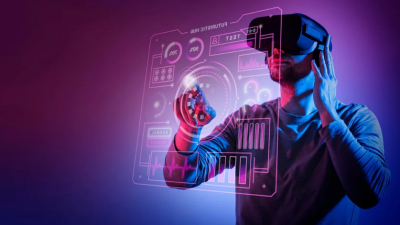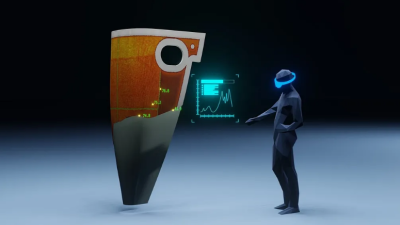Augmented reality (AR) has come a long way since its early days. What was once a novelty technology has evolved into a powerful tool transforming industries from retail to healthcare.
Behind this remarkable evolution stands artificial intelligence, the silent force multiplier taking AR experiences to unprecedented heights.
The marriage between AI and AR represents more than technological convergence—it’s a paradigm shift in how we interact with digital content overlaid on our physical world.
As processing power increases and algorithms become more sophisticated, the boundaries between what’s real and what’s virtual continue to blur in exciting ways.
AI enhances AR by addressing its fundamental challenges: accurately understanding the environment, recognizing objects, and delivering contextually relevant information.
Computer vision algorithms powered by deep learning can now identify and track surfaces, objects, and people with remarkable precision, allowing digital content to interact naturally with physical surroundings.
Perhaps the most transformative aspect of AI-enhanced AR is personalization. Advanced machine learning models can analyze user behavior, preferences, and context to customize AR experiences in real-time.
Imagine walking into a furniture store where the AR app knows your living room dimensions and color preferences, suggesting only items that would fit perfectly in your space.
The gaming industry has embraced this technological duo enthusiastically. Games like Pokémon GO have evolved to incorporate AI that analyzes player behavior and environment to create more engaging encounters.
Characters can now hide behind real objects, respond to weather conditions, and appear at optimal times based on individual player patterns.
Beyond entertainment, AI-powered AR is revolutionizing education. Intelligent tutoring systems can now project interactive 3D models that adapt to a student’s learning pace and style.
When a student struggles with a particular concept, the system recognizes confusion through facial expression analysis and offers alternative explanations or simpler visualizations.
In healthcare, surgeons are using AI-enhanced AR headsets during complex procedures. These systems process patient data in real-time, highlighting critical structures and providing predictive analytics about potential complications.
Check out this demonstration to see how surgeons are using this technology today.
The retail sector has also witnessed significant transformation. Virtual try-on experiences powered by AI can now accurately simulate how clothing items drape on different body types, dramatically reducing return rates.
At AR Marketing Tips, we’ve documented how businesses implementing these solutions have seen conversion rates increase by up to 40%.
Industrial applications represent another frontier where AI and AR create tremendous value. Maintenance technicians equipped with AR glasses can receive AI-generated guidance customized to their specific task and expertise level.
The system recognizes equipment components, diagnoses problems, and displays step-by-step instructions precisely where needed.
Privacy and ethical considerations remain important challenges as these technologies advance. AI systems processing environmental data through AR devices raise legitimate questions about what information is being collected and how it’s being used.
Transparent policies and user control must evolve alongside technological capabilities.
Despite these challenges, the future looks promising. As edge computing advances, more AI processing will happen directly on AR devices rather than in the cloud, reducing latency and enhancing privacy.
This will enable even more seamless integration between digital information and physical reality.
The convergence of AR and AI represents not just technological advancement but a fundamental shift in human-computer interaction.
We’re moving toward a world where digital assistance becomes truly contextual, anticipatory, and natural—a world where technology fades into the background while its benefits remain front and center.
For businesses and developers looking to leverage these technologies, now is the time to experiment and innovate. The tools are increasingly accessible, and the potential applications span virtually every industry.





